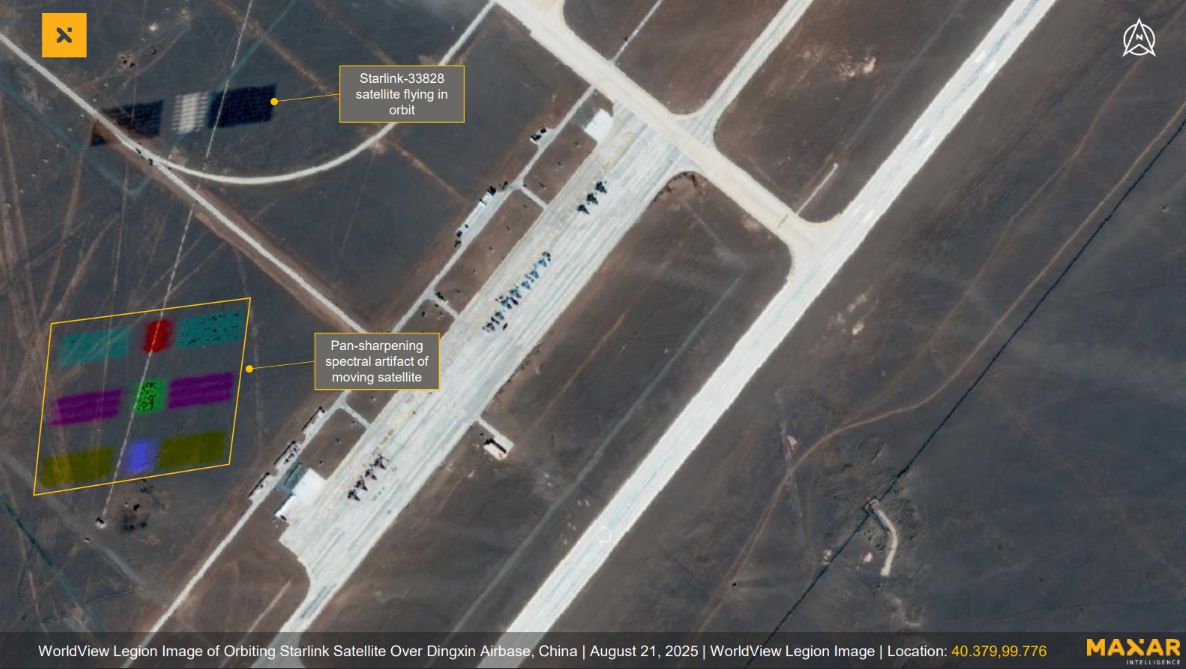
As Maxar Intelligence’s WorldView Legion satellite sped over China, it snapped a picture of the Dingxin airbase below, capturing an unexpected sight: a SpaceX Starlink satellite racing through the frame.
This occurrence, where one satellite captures the image of another, is incredibly rare.
In the photograph, the Starlink’s darker image can be seen along with three colorful artifacts caused by the imaging process.
“The rainbow effect you see is called a pan-sharpening spectral artifact,” says Susanne Hake, SVP and GM at Maxar Intelligence.
WorldView Legion caught the fleeting glance during its operation in Low Earth Orbit (LEO), an exceptional event that highlights the crowded space landscape.
Hake emphasizes the rarity of such encounters due to the vastness of space and the small size of individual satellites—making it unlikely for them to intersect in this manner. Satellites typically run at speeds around 1,400 meters per second, complicating imaging like this.
This event raises concerns about satellite congestion in LEO as ongoing discussions about responsible satellite management intensify.
- Related Articles:
- Internet Starlink satellites aren’t just messing up visible light images of the universe, they’re unintentionally interfering with radio astronomy as well
- Satellite internet provider Starlink is down (Update: now ‘mostly recovered’
- This ’tediously accurate’ map of our solar system with the moon scaled to a single pixel would still take 665 monitors laid end-to-end to show all at once
